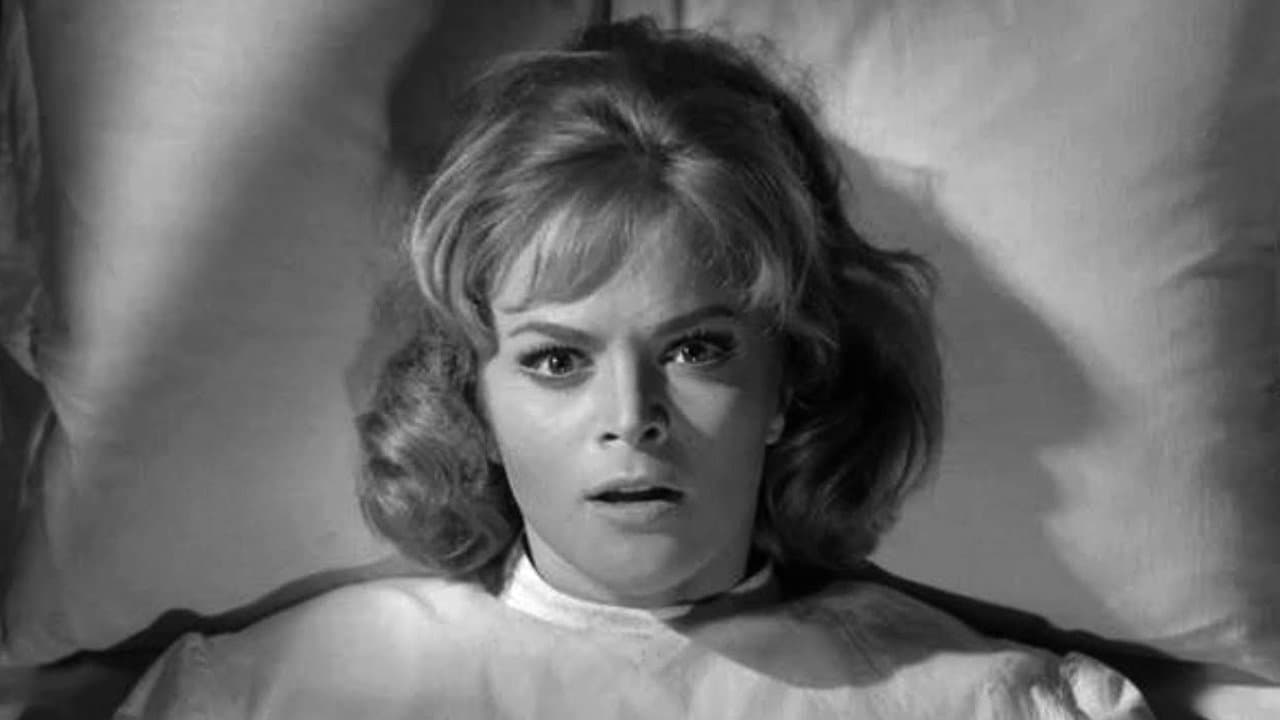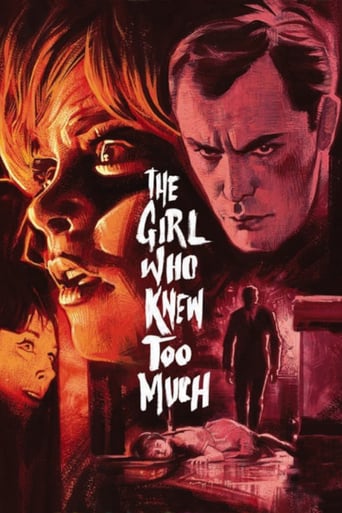

People are voting emotionally.
... View MoreAfter playing with our expectations, this turns out to be a very different sort of film.
... View MoreA clunky actioner with a handful of cool moments.
... View MoreAn old-fashioned movie made with new-fashioned finesse.
... View More"The Girl Who Knew Too Much" is a tedious early example of the giallo formula. Historically it has little else going for it.I guess we can call it a giallo because of the familiar trope of the main character witnessing a murder and then becoming the next likely victim.I found the plot really hard to follow and impossible to interest myself in. Mario Bava, the Italian "Master of Suspense", isn't really the master of anything. I've seen almost all of his movies now and they all suck, just like this one. Thinly plotted boring garbage that you couldn't follow even if you wanted to.I said at the beginning of this review that the movie is historically significant because it is one of the first gialli. By that same token, Bava is historically significant for having made it, and a few of the others. His significance ends there.
... View MoreBava pays explicit homage to Hitchcock in this fun, mostly light hearted black and white mystery. An American girl vacationing in Rome witnesses what might be a murder (or is it her overactive imagination, spurred on by her love of cheap mystery novels?). And before you know it, she's the possible target of a serial killer. The black and white photography is beautiful, but Bava tones his style down just a bit, and it works; the photography compliments the story, without swamping it,. There are weak spots, like an annoying voice over that insists on explaining what the images are making very clear by themselves, and performances that are uneven (especially in supporting roles). But, the bottom line is, if it wasn't in Italian, one could even believe this was a Hitchcock film, which is a pretty high compliment...
... View MoreWith The Girl Who Knew Too Much, director Mario Bava planted the seed that would evolve into the sub-genre known as the giallo. In fairness, it doesn't much resemble the films that would typify this genre in the 70's. Bava's next film Blood and Black Lace would truly be the definitive template film that would inform the giallo. But there is no doubting that some of the recurring motives and ideas of this most Italian film genre began here.As the title suggests, The Girl Who Knew Too Much is indebted to Alfred Hitchcock more than anything else. The idea of an innocent thrust into the middle of a deadly situation is one Hitchcock used many times. While the romantic sub-plot and moments of light comedy also recall his work. These latter two elements are mainly what mark out TGWKTM as a cross-over film, as they are certainly not features of giallo cinema as it would develop. But the light, comic approach is one of the things that make this one of the most playful and upbeat films that Mario Bava ever made. Unlike his three other gialli, this film actually has sympathetic characters. While it doesn't have the melodramatic tendencies that those ensemble movies had either. The approach is much more restrained, with a fairly simple amateur sleuth narrative being the framework. Completely different too is the black and white aesthetic. Bava is of course rightfully famous for his masterful use of colour but in this film he shows that his use of light and contrast is just as impressive. This is a very handsome looking movie. Letícia Román adds to this aesthetic too of course, seeing as she is a very beautiful woman. Visually, this is a terrific film. Story-wise, it's certainly less interesting. The fairly mechanical plot is sufficient enough in taking us from A to B but it isn't particularly memorable. But it does introduce some of the motives that would go on to form an important part of giallo cinema such as the convoluted mystery, the bizarre reasoning for murder and the importance of optical subjectivity as well as the focus on style over substance.The Girl Who Knew Too Much is a film that should be seen by fans of Mario Bava as well as dedicated students of all things giallo. It's a film that is as breezy and light as the genre ever got. It's a lovely and beautiful looking flick from a master film-maker.
... View MoreA young tourist arrives in Rome and witnesses a brutal knifing. The assailant then attacks her and she awakens in the hospital. She apparently had been talking about the murder in her delirium and a police investigator is nearby. He dismisses her story as just a dream and no one will believe her that it occurred. In fact, doctors then arrive and talk about how she is a neurotic and probably imagined the incident due to alcoholism or a bump on the head! The woman just catch a break from these jerks! The only one who will even listen to her is a young doctor (played by American actor, John Saxon)--though he's also convinced the incident never occurred.A bit later, the young lady meets a woman about her age that takes her under her wing. This new friend comes on a bit strong and even invites the lady to stay in her home while she's away in Switzerland. This and the fact that the house is on the same square where the murder apparently took place would certainly seem to be good reasons to decline the offer--but she does not! There, alone in the house, you know something bad will happen! Leave, lady...leave!!! But, she doesn't and again and again, it looks like she's just imagining all of this.This is a very creepy and atmospheric thriller from famed horror director Mario Bava--who made a lot of other cool films in his career, such as "Danger: Diabolik". His films are seldom dull--and this one is no exception. Exciting and with lots of nice twists.By the way, in an odd casting decision, the Italian actress Letícia Román was cast in the lead as an American. And, American John Saxon was cast as an Italian! Talk about weird...but it somehow worked!
... View More